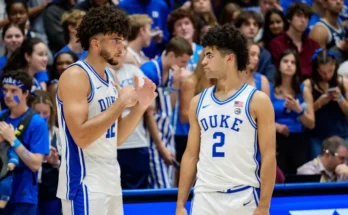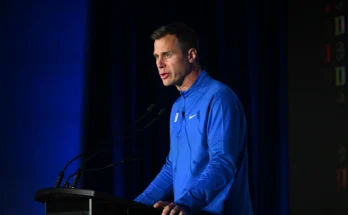Why the Edmonton Oilers’ postseason scratch list might surprise
The Edmonton Oilers have long been considered one of the more successful teams in the NHL, with a rich history that includes multiple Stanley Cup victories and some of the greatest hockey players to ever grace the ice. In recent years, the team has re-established itself as a competitive force, with superstars like Connor McDavid and Leon Draisaitl leading the charge. However, while the Oilers have remained a strong regular-season team, their postseason success has often been elusive. In light of this, the Oilers’ postseason scratch list – the list of players who do not make the lineup for playoff games – is one that might surprise fans, analysts, and even hockey insiders. The reasoning behind these scratches can be more complex than many would assume, involving factors such as team chemistry, the strengths and weaknesses of individual players, matchup considerations, and the balancing act between offense and defense.
The postseason scratch list of a team like the Oilers holds particular intrigue because it has the potential to include players who might seem indispensable to the team’s success on paper. The Oilers’ roster boasts elite talent, particularly in offensive positions, but the team is also known to have some defensive vulnerabilities that have haunted them in past playoff series. Despite this, certain players who may seem integral to the lineup could still find themselves on the outside looking in. This paradox, in which high-caliber players are left out of the lineup for key postseason games, can raise questions about how the Oilers approach their playoff roster decisions and what factors might contribute to a player’s exclusion.
The Importance of Team Chemistry
In a sport as fast-paced and high-stakes as hockey, team chemistry can often make or break a team’s performance in the postseason. For the Oilers, their lineup decisions often come down to how well different players mesh with one another and contribute to the overall balance of the team. While McDavid and Draisaitl are undoubtedly the stars, the team’s success relies on more than just individual brilliance. A well-rounded squad that works together cohesively is far more likely to achieve postseason success.
In some cases, a player who is talented offensively may find themselves scratched not because they lack skill but because they disrupt the flow of the team’s lines. The Oilers may choose to go with players who better complement the line combinations that have been successful throughout the regular season, or they may opt for those who bring a specific style of play, like speed, grit, or defensive responsibility. Sometimes, this means a player who can light up the scoreboard in the regular season doesn’t fit into the team’s strategic plans for the postseason.
For example, a player like Jesse Puljujärvi, who has shown flashes of brilliance in the past, may find himself scratched despite being a fan favorite. Puljujärvi has the skill set to be a productive player but has struggled with consistency. In the high-pressure environment of the playoffs, the Oilers’ coaching staff might opt to leave him out of the lineup in favor of players who bring a more reliable, consistent effort or who fit the exact needs of a given game. In this case, the decision isn’t a knock on Puljujärvi’s talent but rather a reflection of the delicate balance required in the postseason lineup.
Special Teams and Matchup Considerations
A crucial factor in the postseason is the emphasis on special teams play, particularly the power play and penalty kill. The Oilers have long been known for their lethal power play, thanks to McDavid and Draisaitl’s dynamic partnership, but a team’s effectiveness on the penalty kill and its ability to match up against opposing special teams can often determine the outcome of a series. This is an area where a player’s skill set can significantly influence whether or not they get into the lineup.
For example, a player like Warren Foegele may not be the first player to jump out as a top scorer, but his contributions on the penalty kill and his physicality can make him an invaluable asset when the Oilers face teams with potent special teams units. If the Oilers are facing an opponent with a dangerous power play, Foegele’s ability to contribute to a strong penalty kill could make him a key player in the postseason lineup, while a more offensively-oriented player might be scratched in favor of him. On the other hand, if the team faces a more defensively oriented opponent, a skilled offensive player like Puljujärvi or Zach Hyman could be given more opportunities to shine.
In some cases, a team might also choose to scratch a player to adjust to the specific strengths and weaknesses of their opponent. If the Oilers are up against a team that plays a physical, grinding style, they may prioritize players with more grit, toughness, and defensive responsibility. This strategy could lead to a skilled offensive player being scratched to make room for someone who better fits the needs of the matchup.
Balancing Offensive and Defensive Play
The Oilers’ biggest challenge has often been their defensive play. While they boast one of the most potent offensive units in the league, their defense has been a point of contention in their pursuit of postseason success. The Oilers need to strike the right balance between offensive firepower and defensive stability, and this dynamic plays a significant role in their scratch list decisions. Players who excel at shutting down the opposition, blocking shots, or winning battles in the defensive zone might see their roles expanded in the playoffs, especially if they can provide a more balanced approach to the team’s needs.
In this regard, defensemen like Darnell Nurse and Cody Ceci play pivotal roles in determining which players make the roster. These players are tasked with keeping the puck out of the net and ensuring the team isn’t too top-heavy in terms of offensive threats. While McDavid and Draisaitl may be responsible for generating the majority of the offense, players like Nurse can be essential in helping the Oilers stay competitive against high-scoring opponents. In certain scenarios, the Oilers may opt to scratch a player like an offensively-minded forward who doesn’t contribute as heavily to the defensive side of the game, thereby reinforcing the need for a more balanced team approach in the postseason.
Veteran Presence and Leadership
Another factor that might surprise fans about the Oilers’ postseason scratch list is the potential exclusion of a veteran player who has been with the team for several years. In the pressure-filled environment of the playoffs, veteran players with a wealth of postseason experience are often valued for their leadership, poise, and ability to keep the team focused. However, experience alone is not always enough to earn a spot in the lineup, especially if a younger player is in better form or better suited to the current matchup.
Consider a player like Ryan Nugent-Hopkins, who has long been one of the core members of the Oilers. Nugent-Hopkins brings significant experience and is known for his versatility, but if the team’s coaching staff believes that a younger, faster player might provide more impact in a given series, he could find himself scratched. This decision, while difficult, would be made in the context of maximizing the team’s chances of success and may not reflect a lack of skill or commitment on Nugent-Hopkins’ part. Instead, it would highlight the Oilers’ focus on having the most effective roster for each series.
Roster Flexibility and the Cap Space Dilemma
In addition to the skill sets and matchup considerations, roster flexibility is another key factor that can impact which players make the postseason roster. The NHL’s salary cap can complicate decisions about which players get into the lineup. If the Oilers are close to the cap limit, the team may need to make difficult choices about which players to dress in the postseason. In some cases, players who may seem to be marginally underperforming or not fitting the needs of the team could be scratched in favor of allowing the Oilers to bring in additional talent or more flexibility in their lineup.
This salary cap pressure means that the Oilers might have to prioritize certain players who contribute at both ends of the ice or who provide versatility in how they can be utilized. Players who offer flexibility in terms of playing multiple roles, such as a utility forward who can play on various lines or a defenseman who can both contribute offensively and handle shutdown duties, might be favored over others who are less adaptable.
Conclusion
In the end, the Edmonton Oilers’ postseason scratch list may surprise many because it isn’t just about a player’s raw talent or statistics. The team’s approach to the postseason is shaped by an intricate web of factors, from team chemistry and special teams to defensive balance and matchup strategy. The Oilers must weigh the need for offensive firepower against the necessity of defensive stability, all while making decisions that allow them to maximize their chances of success in a playoff series.
As the team continues to evolve, fans will inevitably see unexpected names on the scratch list, even if those players are seen as key contributors during the regular season. For the Oilers, the ultimate goal is not just to get into the playoffs but to go deep and, eventually, capture the Stanley Cup. The decisions made around the scratch list reflect the team’s understanding of the nuances of playoff hockey and the need for every player to contribute in their own way to the team’s success. The list of players who don’t make the lineup for a given postseason game is likely to be shaped by this greater strategic vision, one that may surprise even the most dedicated of fans.



